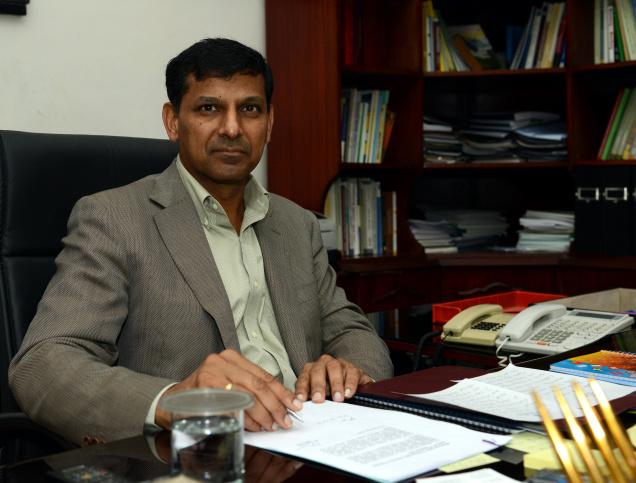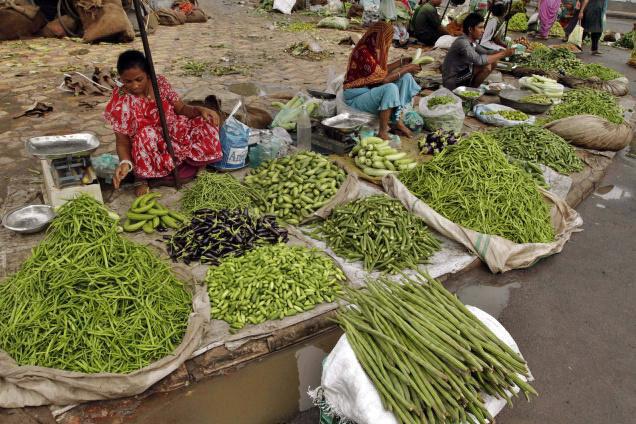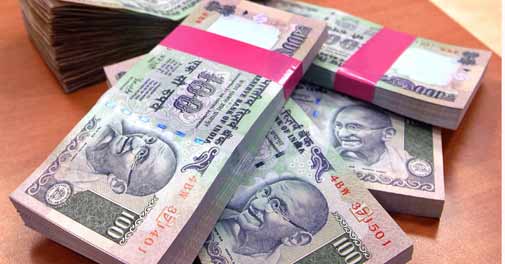Home Tags Posts tagged with "indian economy"
indian economy
Indian rupee and stocks have jumped a day after the country’s new central bank chief Raghuram Rajan took charge and promised tough action to boost growth.
The Indian currency, one of the world’s worst performers this year, rose 2.3% against the US dollar.
India’s main stock index, the Sensex, rose 2.3% in early trade on Thursday.
On Wednesday, Raghuram Rajan unveiled a series of measures aimed at propping up the currency and liberalizing the country’s banking sector.
“To a certain extent, the recent rupee tumble and instability in the financial markets has been a crisis of confidence,” said Radhika Rao, an economist with DBS Bank.
“To that end, the path of action provided by the new governor and the stress on keeping communications predictable and consistent will be a welcome move.”
One of the biggest issues facing the Indian economy has been the sharp decline in the rupee.

Raghuram Rajan unveiled a series of measures aimed at propping up the currency and liberalizing India’s banking sector
The Indian currency has dipped nearly 20% against the US dollar since May, as international investors pulled out money from the country.
The pull-out has been triggered by a range of factors, including slowing economic growth and a lack of key reforms. At the same time, a recovery in the US economy has also made India a less attractive option for investors.
India’s central bank has taken some steps to try to maintain the rupee’s value and also shore up confidence in the economy.
However, these measures, which include increasing duty on gold, imposing capital controls and raising short-term interest rates, have failed to have any significant impact.
When he took charge, Raghuram Rajan announced that some of the actions that he would take to tackle the issue “will not be popular”.
“The governorship of the central bank is not meant to win one votes or Facebook <<likes>>. But I hope to do the right thing, no matter what the criticism, even while looking to learn from the criticism,” he said.
Raghuram Rajan’s statement has helped to restore confidence, with the Indian currency rising more than 2% to 65.53 rupees against the US dollar on Thursday.
He also unveiled steps aimed at opening up the country’s banking sector.
Under the new rules, Indian banks will no longer have to seek the central bank’s approval for each branch they want to open.
However, the banks will be obliged to open branches in rural areas – in proportion with their expansion in the cities – in order to extend financial services to all areas of the country.
The central bank will also issue new banking licences, beginning next year.
Raghuram Rajan added that the central bank would also look at easing the requirement for banks to invest in government bonds, to free credit for productive parts of the economy.
Analysts said the moves indicated that Raghuram Rajan would take concrete steps to tackle the issues facing the country.
According to Indian government’s latest figures, the country’s economy continues to slowdown in Q2 2013.
For the April-to-June quarter, India’s economy grew at a rate of 4.4%, compared with the same period in the previous year.
It was a weaker performance than most economists had been expecting and was a slowdown from the first three months of the year, when growth was 4.8%.
A contraction in mining and manufacturing activity was behind the slowdown.
Friday’s figures show the economy is now expanding at the slowest rate since 2009.
“We do not wish to sound alarmist, but concern on the economy can hardly be overstated,” said Chandrajit Banerjee, Director General, Confederation of Indian Industry, in reaction to the latest figures.
“The economy needs the undivided attention of policy makers,” she said.

India’s economy continues to slowdown in Q2 2013
It adds to the pressure on Indian PM Manmohan Singh, who earlier addressed parliament over the nation’s economic problems.
In his statement to parliament, made before the figures were released, the prime minister said India was not facing a repeat of the crisis in 1991.
Back then, India’s foreign currency reserves became so depleted that it had to borrow from the International Monetary Fund to pay its import bills.
“Growth will pick up in the second half, barring extreme unforeseen eventualities,” the prime minister said.
He also said that a strong monsoon would boost harvests and help reduce food inflation.
Manmohan Singh was also keen to reassure the nation over the falling value of the Indian rupee, saying it was “a matter of concern”.
The rupee hit a record low against the dollar on Wednesday and has fallen more than 20% this year.
That fall is damaging for the economy, as India imports large amounts of fuel and foodstuffs and the weak rupee makes those imports more expensive.
Manmohan Singh said: “Clearly, we need to reduce our appetite for gold, economize [on] the use of petroleum products and take steps to increase our exports.”
He also blamed the fall in the rupee on “external” factors.
The prime minister highlighted the impact of developments in the US, where the economy is improving and officials at the central bank have started to talk about cutting back on stimulus measures.
“In a more equitable world order, it is only appropriate that the developed countries – in pursuing their fiscal and monetary policies – should take into account the repercussions on the economy of emerging countries,” Manmohan Singh said.
The Indian government has raised the import duty on gold and increased deposit rates to stem the outflow of money.
[youtube jCJIK198BGM]
The Indian rupee has hit a new all-time record low against the US dollar, amid concerns the Federal Reserve will soon scale back its stimulus measures.
It dropped to 64.13 against the US dollar in early trade on Tuesday.
Foreign investors have been pulling money out of India, as the economy has slowed and the cost of borrowing in dollars has risen.
The Reserve Bank of India (RBI) is rumored to have intervened to stem the slide in the currency.
The Indian rupee has declined by nearly 16% against the US dollar since May and is Asia’s worst performing currency so far this year.
Its further decline on Tuesday was mirrored by falls in markets across other developing markets, particularly in Asia.
On Tuesday, Japan’s Nikkei 225 index fell by 2.6%, Hong Kong’s Hang Seng was down 2.2% and South Korea’s Kospi dropped by 1.6%.
The Indonesian stock market fell 4.9% on Tuesday, pushing it into a formal bear market – meaning it has fallen by more than 20% since its last peak.
Minutes from the Federal Reserve’s latest meeting are due to be published on Wednesday, and may set out more details about the rollback of its “quantitative easing” stimulus programme.

The Indian rupee has hit a new all-time record low against the US dollar, amid concerns the Fed will soon scale back its stimulus measures
The Fed is expected to start slowing the rate of its purchases of government debts with newly-created money from next month.
Another source of concern in India is the country’s widening current account deficit.
The current account deficit is a broader measure than the trade deficit, and includes cross-border income flows on investments.
As well as weakening the currency, the deficit can also act as a drain on the central bank’s foreign currency reserves, and suggests that the Indian economy as a whole needs to borrow more money from abroad.
Meanwhile, the Indian government has been attempting to stem the tide of investor money leaving the country by imposing capital controls.
The combination of all these factors has sparked comparisons to the financial crisis that India faced in 1991. In July that year, the rupee eventually fell by more than 32% against the US dollar after foreign exchange reserves were depleted.
On that occasion, the country had to be rescued by the International Monetary Fund (IMF).
“Weakness concentrated in the Brazilian real and Indian rupee makes sense, as these are current account deficit economies with limited ability to defend their currencies,” said Bank of Singapore’s chief economist Richard Jerram.
“India is in worse shape than Brazil, with few viable policy responses.
“Capital controls in India are not likely to have much impact and there is the risk that a [credit] ratings agency downgrade leads to further currency weakness.”
Over the weekend, Indian PM Manmohan Singh tried to calm fears that India was facing another currency crisis.
Manmohan Singh said that back in 1991, the country only had enough foreign currency reserves to cover the country’s borrowing needs for 15 days, while currently it has reserves equivalent to six to seven months.
“So there is no comparison. And no question of going back to [the] 1991 crisis,” Manmohan Singh told the Press Trust of India.
International investors have withdrawn $11.58 billion in shares and debt from India’s markets since the beginning of June, according to official data.
India, which is Asia’s third-largest economy, grew at an annual rate of 5% in the 2012-13 financial year, the slowest pace in 10 years.
[youtube TOl-WsjQ3ZU]



